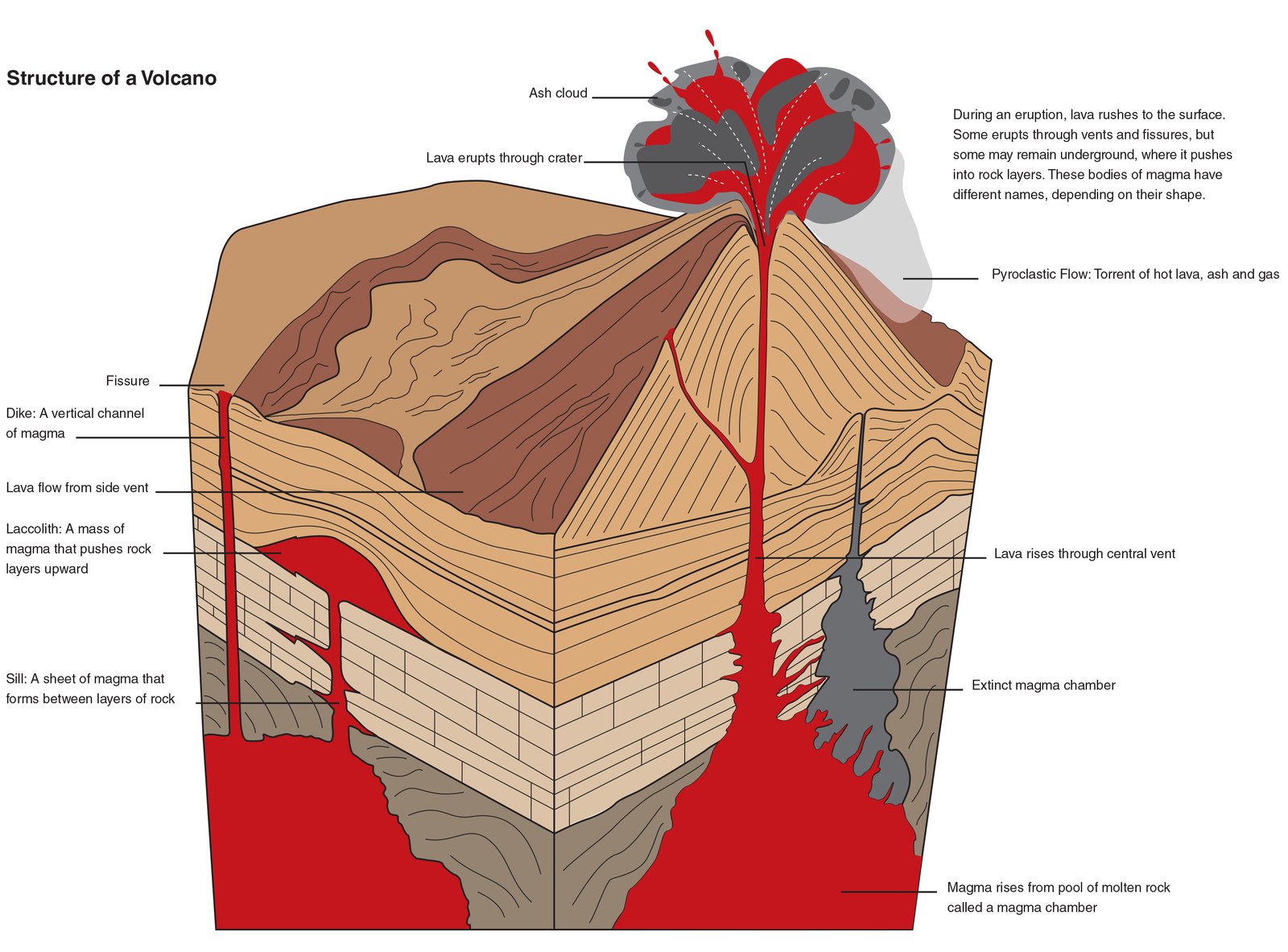Structure of volcanoes

© Australian Museum
Craters and calderas
Many volcanoes contain a depression. Small depressions (i.e. less than 1 km across) are called craters whereas those over 1 km across are called calderas. Most craters result from the explosive activity by which the volcanic vent is cleared. However, most calderas result from subsidence produced by the removal of large volumes of the underlying magma. Many present-day craters and calderas are filled with water, and are know as crater lakes.
Formation of craters: Krakatoa
The Krakatoa volcano in Indonesia erupted violently in 1883. Prior to the stupendous eruption, the Krakatoa island group consisted of one large and two smaller volcanic islands lying around and within a prehistoric caldera. The 1883 eruption resulted in the removal of two of the three volcanic cones which made up Krakatoa Island and the area between the three remaining remnant islands was filled by the sea to a depth of 250 m. The eruptions began in May of 1883 with small explosions and built up in activity. The largest eruption (among the largest ever witnessed by people) occurred between 26 - 27 August 1883 and could be heard from a distance of 1000 km away. Tsunamis over 40 m in height killed 36 000 people on the islands of Java and Sumatra. The clouds of ash expelled were so dense that Jakarta (some 160 km away) was in total darkness by midday 27 August 1883. The eruption cloud rose to a height of over 80 km and fell over an area of 800 000 km2. Large (i.e. over 0.5 m across) fragments fell over an area of 100 km2. Because of the large volume of ash sent the atmosphere by this eruption, the entire world experienced unusually cold weather for the next few years, as the ash helped to black out the sun's rays. Probably over 20 km3 of rock were ejected in this eruption, most of it being dacitic pumice from the exploding magma, as well as rock fragments from the former old volcanic cones which were blasted in the eruption.
Crater Lake, Oregon, USA
Crater Lake in Oregon, USA, is a large caldera some 10 km across and more than 1.2 km deep which formed about 7000 years ago after the collapse of a pre-existing andesitic cone known as Mount Mazama. The pyroclastic (chunks of igneous rock ejected from a volcano) deposits from this eruption are spread over a wide area of Oregon and neighbouring states. The deposits of airborne pumice and basaltic scoria had a volume of about 75 km3, of which some 30 km3 represents formerly liquid magma. The volcano collapsed as the vast amounts of magma erupted from the underlying chamber. Water filled the caldera over time, leading to the present crater lake. The Wizard Islands within this lake are probably younger cones.
Living with volcanoes
Spectacular eruptions from volcanoes have fascinated humans ever since people first walked on the Earth. In fact, some of the earliest known hominids (Australopithecus afarensis) used lava fields as protective refuges from wild animals. Today, over 400 million people on Earth live within reach of volcanic eruptions, with many of them either dwelling or growing crops on the flanks of dormant and active volcanoes.


